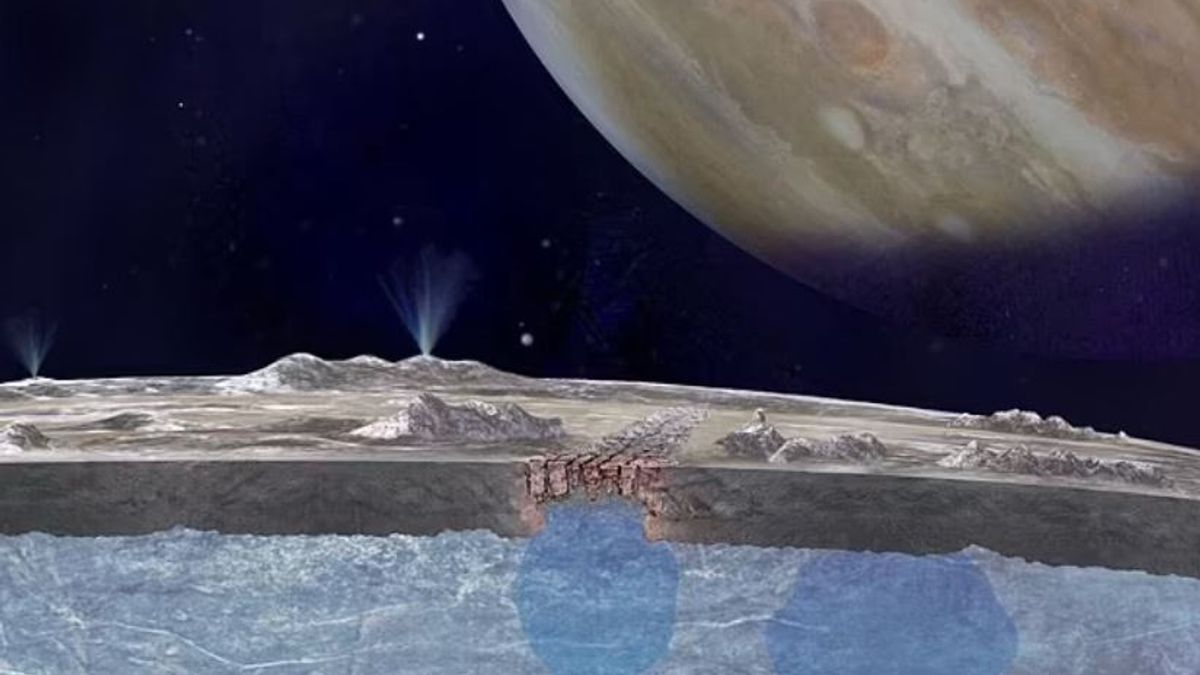JAKARTA - The salt water contained in the shell of Europa, one of Jupiter's moons, can transport oxygen to a sea of liquid water covered in ice. This is stated by a study recently conducted by a number of space researchers.
Researchers think the water ice has the potential to help sustain alien life beneath the moon's 'field of chaos' - a landscape made up of fissures, ridges and ice blocks that cover a quarter of the world's ice.
They believe the amount of oxygen brought into Europa's oceans could be equivalent to the amount in Planet Earth's oceans today.
This theory has been proposed before, but experts led by the University of Texas at Austin are continuing to test it by building the world's first physics-based computer simulation of the process.
"Our research puts this process into the realm of possibility," said lead researcher Marc Hesse, a professor in the UT Jackson School of Geosciences Department of Geological Sciences.
"This provides a solution to what is considered to be one of the outstanding problems of the habitability of the undersea on Europa's surface," added Hesse.
Europa is a top place to look for alien life because scientists have detected signs of oxygen and water, along with chemicals that could serve as nutrients.
But the moon's icy shell, estimated to be 24 km thick, also serves as a barrier between water and oxygen produced by sunlight and charged particles from Jupiter hitting the icy surface.
Hesse believes the most plausible scenario based on the available evidence is oxygen being carried by saltwater.
Scientists think that the chaos field formed over the region where Europa's ice shell partially melted to form saltwater, which could mix with oxygen from the surface.
A computer model created by the researchers shows what happens to saltwater after the formation of the chaos field.
This suggests the brine flows in a different way, taking the form of 'porosity waves' which cause the pores in the ice to widen momentarily allowing the brine to pass through before resealing.
Hesse compared the process to a cartoon-like bulge of water running down a garden hose.
According to the researchers, this mode of transportation appears to be an effective way of carrying oxygen through the ice, with 86 percent of the oxygen taken up at the surface riding waves all the way to the sea.
The data, however, allow for varying levels of oxygen delivered to Europa's oceans over its history, with estimates ranging by a factor of 10.000.
SEE ALSO:
Co-author Steven Vance, a research scientist at NASA's Jet Propulsion Laboratory (JPL), said the highest estimates would make oxygen levels in Europa's oceans similar to those in Earth's oceans. This could raise hopes about oxygen's potential to support life in the hidden oceans.
"It's interesting to think about the different types of aerobic organisms that live under the ice," he added.
Vance said that NASA's upcoming Europa Clipper 2024 mission could help improve estimates of oxygen and other materials for life on icy moons.
Kevin Hand, a scientist focused on Europa research at NASA JPL who was not part of the study, said the study presents a convincing explanation for oxygen transport on Europa.
"We know that Europa has useful compounds like oxygen on its surface, but did those compounds make it down to the ocean below, where life could use them?" he said. “In the work of Hesse and his collaborators, the answer seems to be yes.”
The study itself has been published in the journal Geophysical Research Letters. A study that allows the theory of the existence of other life on Europa.
The English, Chinese, Japanese, Arabic, and French versions are automatically generated by the AI. So there may still be inaccuracies in translating, please always see Indonesian as our main language. (system supported by DigitalSiber.id)















